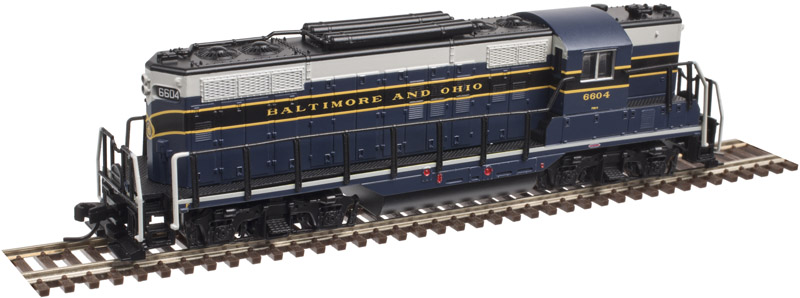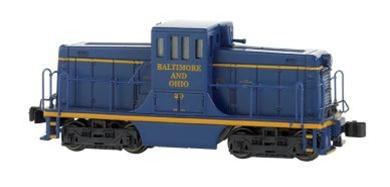History: The Association of American Railroads had been establishing design standards for freight cars since the early part of the century. Each new design standard meant higher capacity, lighter, more durable cars. The 1937 standard 40' box car featured an interior height of 10'. Just prior to America's entry into the war, there was a push for an even larger interior height for the AAR standard. The first cars that would eventually be termed 1944 AAR, were actually built in 1941 but the war delayed its declaration as the standard. The new taller cars required a new design of end. Corrugated metal ends had been used since the days when wood side cars dominated for a very good reason, shifting loads would burst through wooden ends during sudden starts and stops! These corrugated panels were stamped in two sections, split horizontally down the middle. The 1937 standard had 5 ribs on one half and 4 ribs on the other -- creating what is called a 5-4 Dreadnaught end. The slightly taller 1944 model required something a little different. The lower panel has 4 ribs while the upper panel has 3 then a space and a final rectangular rib at the top. Called a 4-3-1 (or R-3-4) Improved Dreadnaught end, this design would dominate new box car construction for years.
Railroad/Company: The Association of American Railroads (AAR) is an industry trade group representing primarily the major freight railroads of North America (Canada, Mexico and the United States). Amtrak and some regional commuter railroads are also members. Smaller freight railroads are typically represented by the American Short Line and Regional Railroad Association (ASLRRA), although some smaller railroads and railroad holding companies are also members of the AAR. The AAR also has two associate member programs, and most associate members are suppliers to the railroad industry.
Where appropriate, the AAR represents its members' interests to the public at large and to Congress and government regulators in particular. The AAR works to improve the efficiency, safety and service of the railroad industry, such as through its responsibility for the industry's interchange rules and equipment specifications, e.g. for locomotive multiple unit control. One of the AAR's duties is to oversee the assignment of reporting marks – two to four letter codes that uniquely identify the owner of any piece of railroad rolling stock or intermodal freight transport equipment (trailers, semi-trailers, containers, etc.) that can be carried on a railroad.
From Wikipedia
Where appropriate, the AAR represents its members' interests to the public at large and to Congress and government regulators in particular. The AAR works to improve the efficiency, safety and service of the railroad industry, such as through its responsibility for the industry's interchange rules and equipment specifications, e.g. for locomotive multiple unit control. One of the AAR's duties is to oversee the assignment of reporting marks – two to four letter codes that uniquely identify the owner of any piece of railroad rolling stock or intermodal freight transport equipment (trailers, semi-trailers, containers, etc.) that can be carried on a railroad.
From Wikipedia
Item Links: We found: 2 different collections associated with Rail - Rolling Stock (Freight) - AAR 1944
- Collection N Scale Model Trains: 713 different items.
- Collection Z Scale Trains: 48 different items.
Item created by: gdm on 2018-01-29 22:04:59. Last edited by gdm on 2018-01-29 22:09:59
If you see errors or missing data in this entry, please feel free to log in and edit it. Anyone with a Gmail account can log in instantly.
If you see errors or missing data in this entry, please feel free to log in and edit it. Anyone with a Gmail account can log in instantly.








